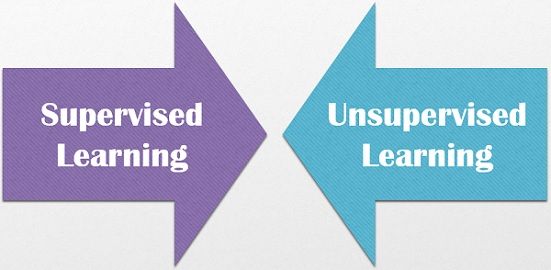 Supervised and Unsupervised learning are the machine learning paradigms which are used in solving the class of tasks by learning from the experience and performance measure. The supervised and Unsupervised learning mainly differ by the fact that supervised learning involves the mapping from the input to the essential output. On the contrary, unsupervised learning does not aim to produce output in the response of the particular input instead it discovers patterns in data.
Supervised and Unsupervised learning are the machine learning paradigms which are used in solving the class of tasks by learning from the experience and performance measure. The supervised and Unsupervised learning mainly differ by the fact that supervised learning involves the mapping from the input to the essential output. On the contrary, unsupervised learning does not aim to produce output in the response of the particular input instead it discovers patterns in data.
These supervised and unsupervised learning techniques are implemented in various applications such as artificial neural networks which is a data processing systems containing a huge number of largely interlinked processing elements.
Content: Supervised Learning Vs Unsupervised Learning
Comparison Chart
| Basis for comparison | Supervised Learning | Unsupervised Learning |
|---|---|---|
| Basic | Deals with labelled data. | Handles unlabeled data. |
| Computational complexity | High | Low |
| Analyzation | Offline | Real-time |
| Accuracy | Produces accurate results | Generates moderate results |
| Sub-domains | Classification and regression | Clustering and Association rule mining |
Definition of Supervised Learning
Supervised learning method involves the training of the system or machine where the training sets along with the target pattern (Output pattern) is provided to the system for performing a task. Typically supervise means to observe and guide the execution of the tasks, project and activity. But, where supervised learning can be implemented? Primarily, it is implemented in the machine learning Regression and Cluster and Neural networks.
Now, how do we train a model? The model is guided with the help of loading the model with the knowledge, to facilitate the prediction of future instances. It uses labelled datasets for the training. The artificial neural networks the input pattern train the network which is also associated with the output pattern.
Definition of Unsupervised Learning
Unsupervised Learning model does not involve the target output which means no training is provided to the system. The system has to learn by its own through determining and adapting according to the structural characteristics in the input patterns. It uses machine learning algorithms that draw conclusions on unlabeled data.
The unsupervised learning works on more complicated algorithms as compared to the supervised learning because we have rare or no information about the data. It creates a less manageable environment as the machine or system intended to generate results for us. The main objective of the unsupervised learning is to search entities such as groups, clusters, dimensionality reduction and perform density estimation.
Key Differences Between Supervised and Unsupervised Learning
- Supervised learning technique deals with the labelled data where the output data patterns are known to the system. As against, the unsupervised learning works with unlabeled data in which the output is just based on the collection of perceptions.
- When it comes to the complexity the supervised learning method is less complex while unsupervised learning method is more complicated.
- The supervised learning can also conduct offline analysis whereas unsupervised learning employs real-time analysis.
- The outcome of the supervised learning technique is more accurate and reliable. In contrast, unsupervised learning generates moderate but reliable results.
- Classification and regression are the types of problems solved under the supervised learning method. Conversely, unsupervised learning includes clustering and associative rule mining problems.
Conclusion
Supervised learning is the technique of accomplishing a task by providing training, input and output patterns to the systems whereas unsupervised learning is a self-learning technique in which system has to discover the features of the input population by its own and no prior set of categories are used.
Caleb Boateng says
very useful information.
Komali Kumari says
Awesome Article! I would like to thank you for the efforts you had made for writing this awesome article. This article inspired me to read more.